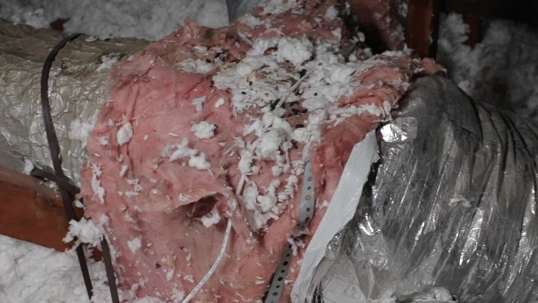Is a stale, ammonia-like odor coming from your vents? Do you hear skittering sounds in the walls at night? It’s unsettling to think about, but a pest infestation might be inside your home’s ductwork. Read more to learn how pests like mice and roaches get inside ductwork, the health risks this kind of infestation can pose, and what signs mean it’s time to call an exterminator and get your ducts cleaned.
How Do Roaches and Mice Get Inside Ductwork?
Roaches can easily crawl inside the grate over a vent, and if the gaps are large enough, mice can enter this way as well. After all, some mice can fit through an opening the size of a shirt button!
Pests can also squeeze in through rips or gaps in unsealed ductwork. Roaches and rodents are even capable of making their own holes by chewing through air duct material like sheet metal, fiberboard, steel springs, and plastic.
Can Pests In Air Ducts Make You Sick?
A pest infestation in your air ducts opens the door to some health risks. After all, the air that circulates through your home gets pushed through your air ducts, so any germs or allergens that pests leave behind in that ductwork can get picked up and carried into the rest of your home.
These are some adverse health effects that can result from mice and cockroaches contaminating your indoor air:
- Allergies. Many people are allergic to cockroach waste, saliva, and skins, as well as rodent waste, saliva, and dander.
- Asthma attacks. If you have asthma, mouse and cockroach allergens could cause more frequent and severe attacks.
- Hantavirus transmission. Multiple rodents in the U.S. are known to carry hantaviruses, which can result in diseases like hantavirus pulmonary syndrome (HPS). Although there are multiple ways to contract a hantavirus from a mouse, transmission typically occurs when a human inhales air contaminated by infected rodent saliva, urine, or droppings.
How to Detect Pests In Your Air Ducts
Knowing the signs of a pest infestation in your air ducts is crucial to avoid health hazards. It’s time to call the exterminator if you observe any of the following warning signs in or around your ductwork.
- Droppings. Cockroach droppings look similar to coffee grounds, whereas mouse droppings look like tiny black grains of rice.
- Cockroach skins. Like many other bugs, cockroaches shed, and their skins often look almost exactly like a whole cockroach.
- Cockroach egg capsules. These capsules look like tiny brown or black pellets.
- Unpleasant odors. Cockroach droppings give off an oily, musty odor. Mouse urine will have an ammonia-like smell.
- Signs of chewing. Mice need to chew constantly to file down their ever-growing incisors, so evidence of teeth marks and gnawing even on hard materials is a definite sign of an infestation.
- Rips or holes in your ductwork. Even though holes can occur over time as the air duct material ages, you’ll want to get this checked out, especially if you notice any of the other warning signs.
- Smudges and stains in your ductwork. Roaches leave behind dark streaks you can see with a flashlight. Mice also leave behind smudges and urine stains, but you typically won’t be able to see those without a blacklight.
- Scratching, scampering noises. You might be able to hear pests using your air ducts as a highway, particularly at night when they tend to be most active.
What To Do After Pests Have Invaded Your Ductwork
Once an exterminator has helped you get the pest problem under control, getting your ducts thoroughly cleaned, repaired (if necessary), and sealed is essential. This will help prevent health issues and also ensure that your HVAC system won’t waste energy due to air leaks caused by the varmints.
At Rescue Air and Plumbing, we deliver the highest quality duct cleaning, repairs, and replacements throughout the entire Dallas-Fort Worth Metro area so that our customers can breathe better air and enjoy more efficient HVAC systems. If you need help with your home’s ductwork, please don’t hesitate to contact us to learn more about how we can assist you: (972) 201-3253.

